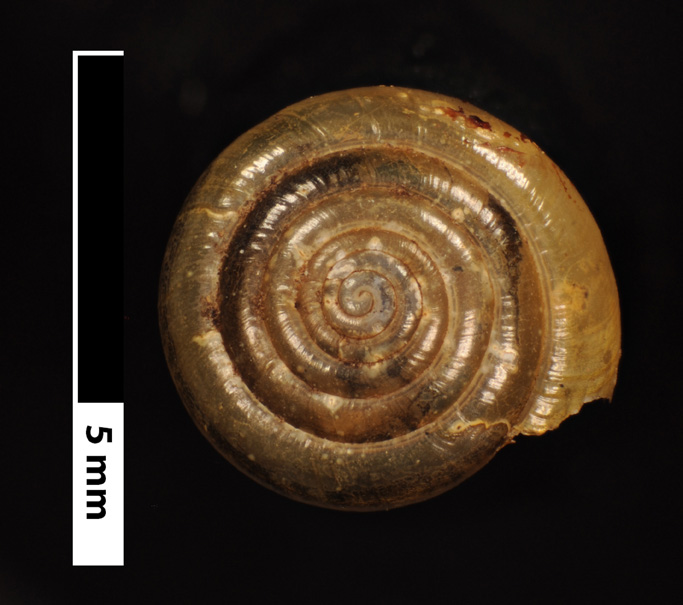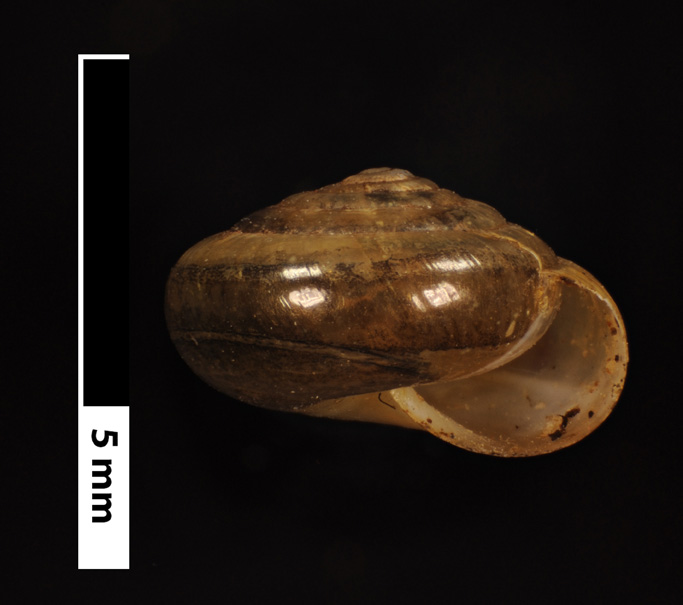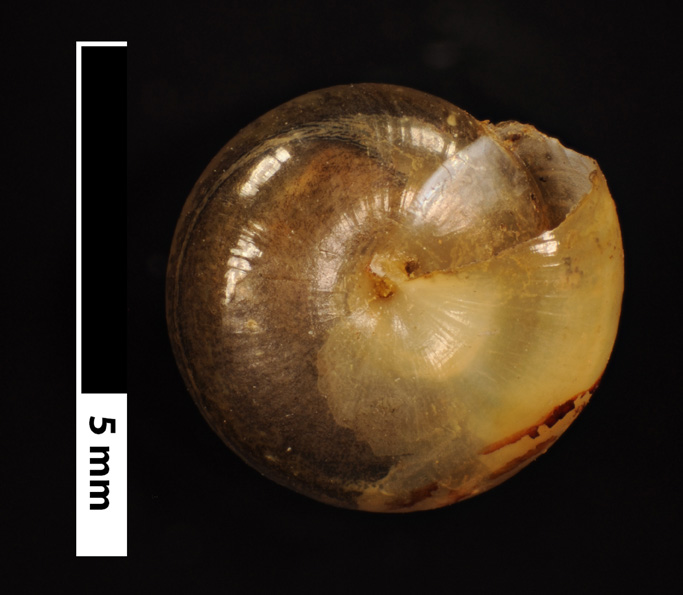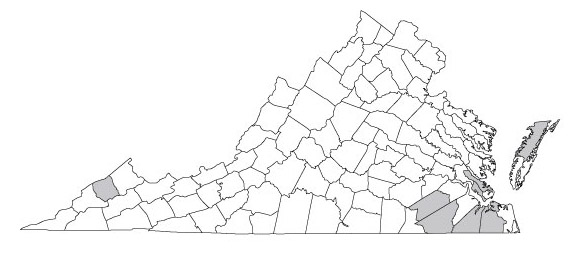Virginia Land Snails




Photo(s): Drawings of Ventridens cerinoideus shells from Pilsbry (1946), with permission from the Academy of Natural Sciences of Philadelphia at Drexel University. Lectotype shell images by Francisco Borrero/ANSP at Drexel University ©.
Click photo(s) to enlarge.
Ventridens cerinoideus (Anthony, 1865)
Family: Gastrodontidae
Common name: Wax Dome
Identification
Width: 7.2 – 9.0 mm
Height: 4.8 – 5.5 mm
Whorls: 6.75+
The surface of Ventridens cerinoideus’ is shell is glossy, with weak radial striations. The shell has a pale yellow color. The lip is dilated slightly at the point where it meets the axis, nearly covering the umbilical perforation. The shell is similar in shape to other Ventridens, though it is almost always smaller than V. gularis, and its apex is lower. Two teeth are present in younger specimens, but are lost just before maturity.
Ecology
This coastal species is found in floodplains, swamps, and marshes, and on roadsides, usually under litter.
Taxonomy
Synonyms for V. cerinoideus are: Helix cerinoidea, Ventridens gularis cerinoideus, Zonites cerinoideus, and Zonitoides (Ventridens) cerinoideus.
Distribution
Ventridens cerinoideus inhabits the Atlantic coastal plain, extending from northern Florida up the coast to Maryland. It is only found in the eastern counties of Virginia and barely reaches the Piedmont.
NatureServe Global Rank: G4
NatureServe State Rank: S3S4
Greg Kimber, Ken Hotopp 11/2012
Range Map



